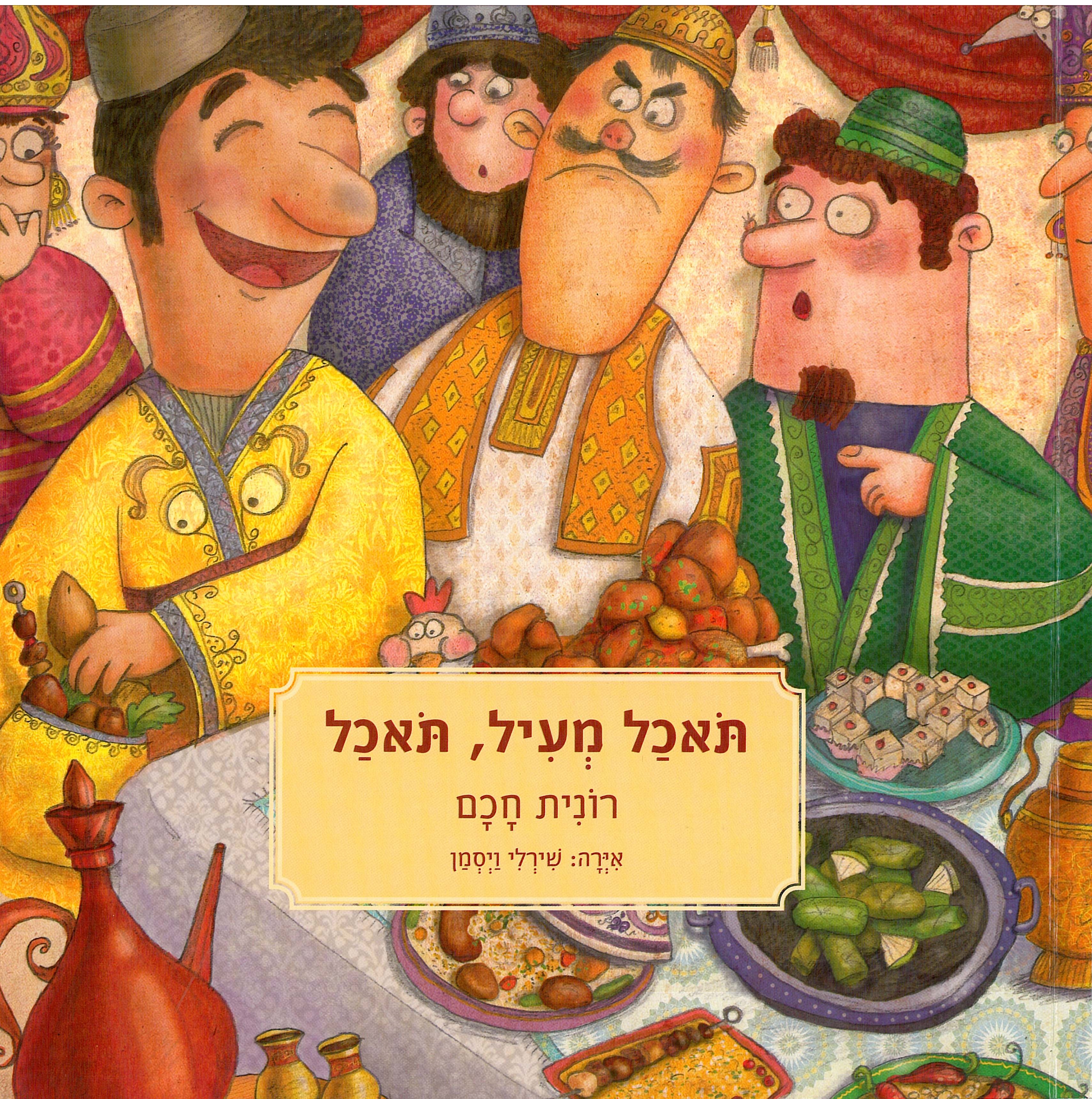תאכל מעיל, תאכל
מאת: רונית חכם | איור: שירלי ויסמן
תרגום לרוסית של ההצעות להורים המודפסות בדפים האחרונים של הספר
Кушайте, кафтан, кушайте
Обработка: Ронит Хахам
Иллюстрации: Ширли Вайсман
Марко, разносчик угля, угощает нарядный кафтан, который он получил в подарок, пирожными, фаршированными овощами и даже рисом! Изумленные гости получают важный урок уважения к другому.
"Не смотри на кувшин, а на то, что внутри него" (Пиркей Авот, 4:27)
Естественно обращать внимание на внешний вид человека – строение тела, одежду и т.п. Но внешние признаки не всегда свидетельствуют о внутренних качествах человека, о том, что действительно важно, хотя и не видно глазу. Известное высказывание из Масехет Авот напоминает нам не судить человека по его внешнему виду, но только по его внутреннему миру.
"Кушайте, кафтан, кушайте" – это забавная обработка для детей народной сказки, разные версии которой есть у разных народов по всему земному шару. В данной версии действие происходит в еврейской общине в Северной Африке.
Занятия в кругу семьи
- "Кто почитаем? Тот, кто уважает других" (Пиркей Авот, 4:1): гости на свадьбе получают от Марко важный урок уважения к другому. По следам пословицы "Не смотри на кувшин" можно побеседовать с детьми о внешних и внутренних качествах, вместе перебрать в памяти внутренние и внешние характеристики и особенности членов семьи, подчеркнуть важность уважения к каждому человеку, несмотря на то, как он выглядит или как он одет.
- Можно вместе полистать книжку и сравнить рисунки, на которых Марко одет в потрепанную одежду, с теми, где он одет нарядно в шелковый кафтан. Остается ли Марко тем же Марко?
- Во время чтения стоит задержаться на странице, на которой Марко "угощает" свой кафтан свадебными угощениями. Рассмешил ли ваших детей рисунок? А вас? Можно спросить детей, почему, по их мнению, Марко кладет еду в карманы кафтана?
- В сказке рассказывается, каким образом евреи Северной Африки когда-то отмечали семейные события. Можно поговорить с детьми о свадьбах и о других праздничных событиях в вашей общине. Как одеваются? Что едят? Есть ли особенные песни или танцы? Были ли ваши дети на свадьбе или на другом празднике? Можно поискать фотографии оттуда и вспомнить, как проходил праздник.
- Можно инсценировать сказку с помощью кукол или подготовить семейный спектакль, основанный на ее сюжете. Желательно позаботиться о костюмах: найти старую одежду, свадебные наряды, нарядный кафтан; сделать черный грим.
- "Когда ешь ты от плодов труда рук твоих, счастлив ты и благо тебе" (Теиллим 128,2). Марко обеспечивает себя разноской угля – это профессия, которая с трудом давала пропитание, и которая уже не существует на свете. Стоит рассказать детям, что такое уголь, как раньше им обогревали дома и как смотрели на разносчиков угля. После этого можно спросить детей, какие профессии они знают. Если хотите, можно рассказать им о своей работе. Чем она вам нравится? Что в ней доставляет вам удовлетворение?
Желаем вам приятного чтения и интересной беседы!












